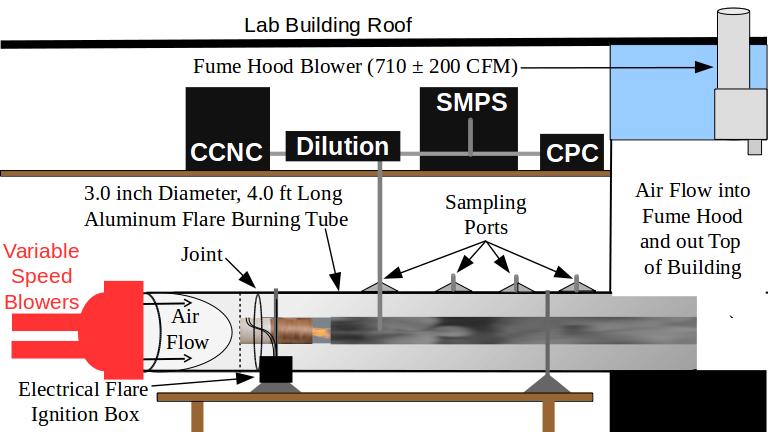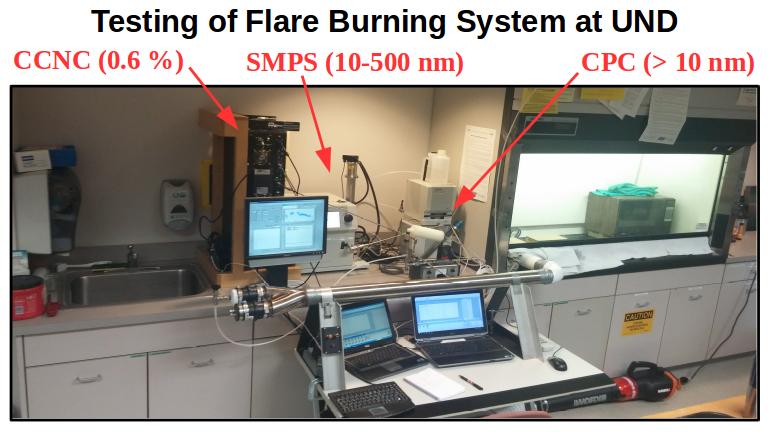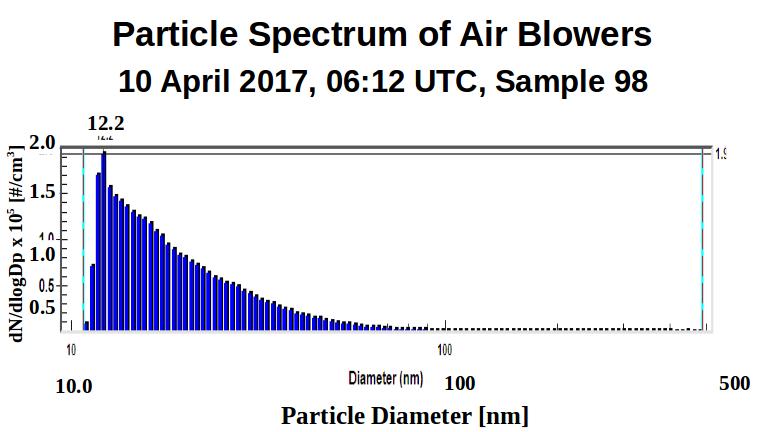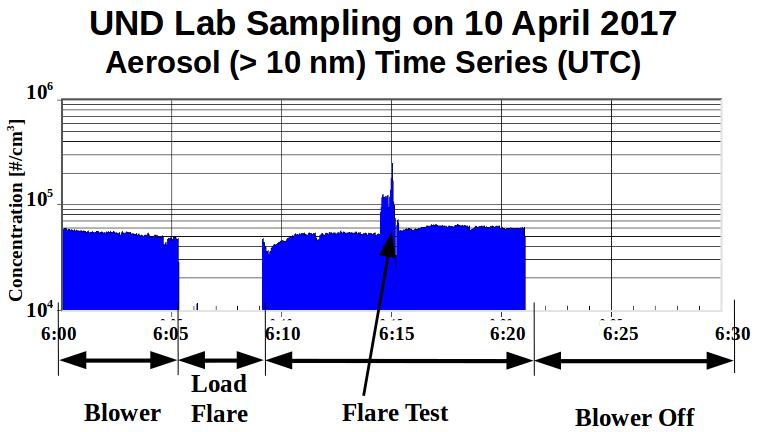Table of Contents
AgI Flare Testing
Objectives
The purpose of this research is be able to safely test flares in the lab and determine their effectiveness. Ultimately, tests will be conducted at Michigan Technological University in their Pi Cloud Chamber.
Setup
The first step was to design and create the apparatus for the testing system. Below is the diagram of the lab setup for the testing. We used two blowers (Worx WG520) to simulate the speed of an aircraft.
Initial Tests
Initial tests were conducted in the lab. The results showed the blower was spewing particles during the test. The particle size and count from the blowers are shown below. A filter box was decided to be put in place but greatly reduced the speed of airflow. Also, the speed of the blowers needed to be higher as there was not enough air flow to keep the soot from contaminating and infiltrating the sampling instruments and they all needed to be taken apart and cleaned. To clean the instruments directions are located either on this wiki page or on the nas drive under Manuals.
Solution to blower particle problem:
First, we took apart the blower in order to spray Teflon on the blades of the blower in order to reduce the particles from the blades. In order to do this we followed these steps:
1. Disattach the blower funnel.
2. Remove all screws from the back of the blower.
3. Remove the Orange backing of the blower.
4. Remove the screws from the white insert around the motor.
5. Pull off the black plastic sides of the motor encasement.
6. Remove the orange attachments to the motor.
7. Use a Vise Grip in order to unscrew the blades off the motor.
8. Clean the blades with Isopropyl Alcohol and Kim wipes.
9. Spray the blades in the hood of the lab with the Teflon Spray. (Apply two coats to each side also apply coat on the rims)
10. Reassemble the blower.
This was not the solution!
Second attempt to fix the blower particles:
We placed a filter in a box after the blowers and the particles were reduced to none but the velocity was cut in half. A 24“x24” was purchased in order to increase the area that the air could flow over.
Dilution System
One of the other problems that we had from the first test was that we needed to dilute the sample air to reduce the concentration of the soot particles to keep the particles from contaminating the instruments. We created a dilution system (pictured below) to obtain different dilution ratios of 10:1, 100:1, and 1000:1.
In order to establish a standard deviation once the valves were locked into place we used the blowers without a filter to generate particles and the following steps were followed:
1. Turn on the blowers and allow the CPC counts to stabalize for 1 minute.
2. Allow the CPC to record data for 3 minutes.
3. Document the mean of the sample that is given to you from the CPC program.
4. Calculate a 10:1, 100:1, 1000:1 ratio and document the expected values based on the starting mean that was given from the CPC data.
5. Open the first valve of the dilution system and allow the CPC to stabalize for ~1 minute.
6. Allow the CPC to record for 3 minutes.
7. Document the mean of the sample.
8. Repeat steps 5-7 for the rest of the valves.
9. Turn of the blowers and close all the valves.
10. Repeat steps 1-9 10x.
11. Calculate the difference from the actual and expected values of all the valve trials and document the differences. You will have three data sets, one for each valve. These will be your data points.
12. Using excel or librecalc calculate the standard deviation of each valve using all the differences that were just obtained in the previous step.



